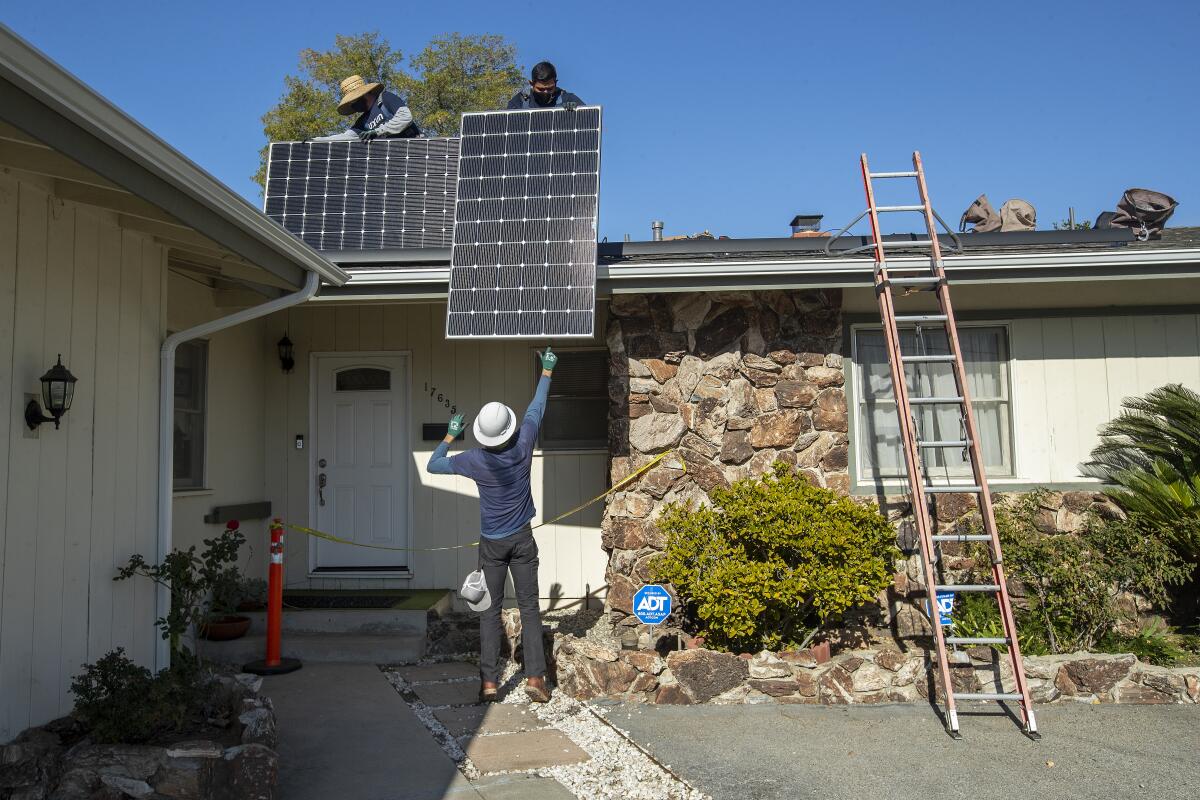Letters to the Editor: I wanted to go solar. Then California passed its new solar rules

- Share via
To the editor: On Dec. 15, the California Public Utilities Commission (CPUC) took an ax to my solar panel plans.
I am a retiree nearing 80 who had hoped to install a solar power system on our small home where my wife and I have lived for four decades. We were counting on net metering rates that would have made it more likely that we would have paid off the upfront costs before I die or my wife dies.
Now, by reducing the amount solar customers are paid for the energy they send into the grid, the CPUC has added years to break even. But they have not extended life expectancy.
Can I come up with the cost of an array in the four-month grace period? Unlikely. The CPUC has driven middle-class folks out of the market who need that extra percentage of net-metering benefits.
The CPUC has harmed lower-income households, which it claims to be helping with this new plan. How about aligning rates with income and subsidizing solar for those near the bottom?
Carl Selkin, Pasadena
..
To the editor: It is shortsighted to disincentivize solar as much as the new rules passed by the CPUC do, drastically reducing compensation for energy that solar owners export to the grid. This will extend the payback period for new solar to about nine years, which is too long for many.
When the utilities install their grid-scale batteries, where will that renewable energy come from? Will it come from huge solar farms and transmission lines that ratepayers will pay for?
Instead of disincentivizing rooftop solar, we should invest in local, distributed resources that will reduce the amount the utilities will need to invest in transmission lines and remote sources. This would save all ratepayers money.
Wayne Morgan, Ventura



